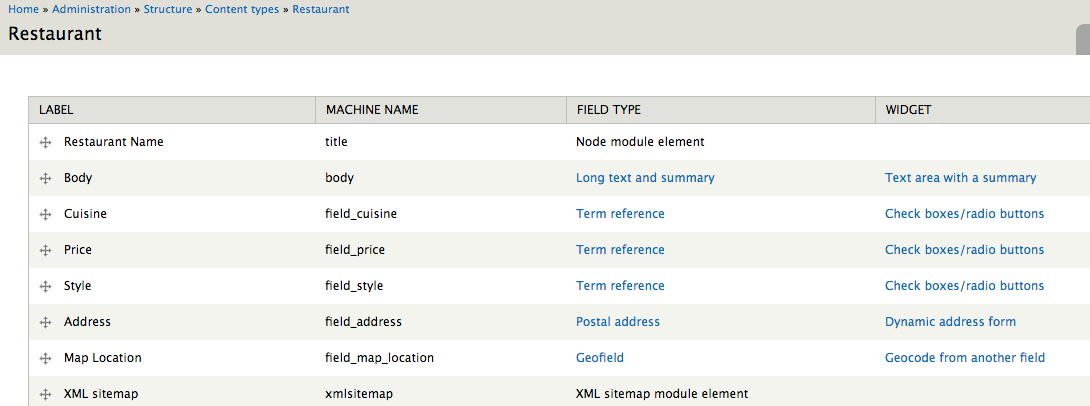The most common question we are asked after client meetings at NEWMEDIA is, “When will my site be done?” The answer to this is partially up to the selected development team, and partly up to the client. When these two parties are in sync, the development is quicker and more effective , and it prevents… Continue reading 3 Ways to Prevent Your Website Project from Taking Too Long
Category: Web Development
PCI Compliance & Drupal Commerce: Which Payment Gateway Should I Choose?
When version 3.0 of the Payment Card Industry Data Security Standard (PCI-DSS) became mandatory in 2015, many eCommerce merchants were ill prepared to meet the more stringent security requirements with the existing modules available for Ubercart and Drupal Commerce. Thankfully, several of the more popular payment processors on the market rose to the challenge and… Continue reading PCI Compliance & Drupal Commerce: Which Payment Gateway Should I Choose?
Drupal vs. WordPress: What Fits Your Needs?
The most important question you can ask yourself when it comes to choosing the right content management system (CMS) for your site is: What do I need my website to do? Two of the most popular CMS platforms are WordPress (current version 4.2.2) and Drupal 7. Both of these provide endless customizable opportunities and features. The following… Continue reading Drupal vs. WordPress: What Fits Your Needs?
Build robust forms in Drupal 8
Over the last few Drupal releases, the Webform module has been the standard for creating robust forms and surveys. While this venerable module has served the community’s needs quite well, major releases of Drupal often afford the opportunity to take a fresh look at how common problems are solved, leveraging new technologies and concepts introduced… Continue reading Build robust forms in Drupal 8
Enforcing Coding Standards with Git, PHPLint, and Drupal Code Sniffer
For a Drupal developer, there are several ways that you can use git hooks to speed up and improve your commits. This article will demonstrate three different pre-commit hooks that you can add to your git repository. The first pre-commit hook uses PHPLint which will validate your PHP code looking for syntax errors and other… Continue reading Enforcing Coding Standards with Git, PHPLint, and Drupal Code Sniffer
Don’t Forget to Aggregate
It takes five minutes, improves your page load times, and now it may help your Google search results—aggregate your Drupal CSS and JavaScript files. On April 21, 2105 Google will change it’s search algorithm to potentially place mobile friendly sites higher in their search results. Google has a mobile-friendly test that allows you to see… Continue reading Don’t Forget to Aggregate
Chrome Search Engines
If you use Google Chrome for your web browser, then Chrome search engines can be helpful to get you to specific pages within sites that you use frequently. The way it works is you add a keyword for a site as a search engine; then you can just type that keyword into the omnibox (URL… Continue reading Chrome Search Engines
Drupal Field Collections: Repeat with Style and Class
Content comes in many shapes, forms and sizes. However, there are some common content patterns that we web designers and developers use quite often. One of these patterns is the combination of image, title, text and link to create a card-style teaser—often used, often created, often duplicated—and for good reason. Let’s take a look at… Continue reading Drupal Field Collections: Repeat with Style and Class
Using the Haversine Formula in Drupal 7
The Haversine formula is one of the easiest to use pieces of complicated math I’ve had the pleasure to use. If you’re not familiar with it, it’s pretty simple in theory – it’s an extension of the Pythagorean formula from a grid to the surface of a sphere, which basically means that you can use… Continue reading Using the Haversine Formula in Drupal 7
Help Others and Help Yourself: Use Meaningful Field Labels and Descriptions
Open source content management systems like Drupal and WordPress provide great tools for creating content types, adding fields, customizing field labels, and adding field-level help text that can essentially serve as built in content documentation for the site administrator. However they are only helpful if you use them. A Quick Embarrassing Story About six months… Continue reading Help Others and Help Yourself: Use Meaningful Field Labels and Descriptions









